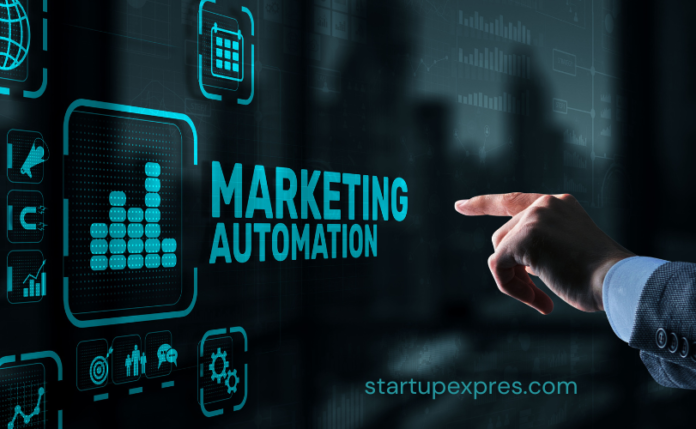Marketing Automation has become essential for businesses looking to enhance efficiency and drive growth. It streamlines marketing efforts, boosts customer engagement, and saves valuable time. In this article, we’ll explore five game-changing tips for effectively leveraging Marketing Automation to achieve your business goals.
Understand Your Audience
To succeed with Marketing Automation, knowing your audience is crucial. Start by creating detailed buyer personas. Understand their pain points, preferences, and behaviors. Use data from surveys, social media, and website analytics to gather insights. Tailoring your messages to specific audience segments increases engagement and conversion rates.
For example, if you discover that your audience is primarily interested in eco-friendly products, you can automate campaigns that highlight sustainable practices. The better you know your audience, the more effectively you can automate your marketing processes.
Utilizing tools like Google Analytics and social media insights can provide valuable information. Track demographics, interests, and online behavior to refine your audience understanding further. The more personalized your approach, the higher the chances of building lasting customer relationships.
Set Clear Goals
Before implementing any Marketing Automation tools, set clear and measurable goals. Define what you want to achieve. Are you aiming to increase lead generation, improve customer retention, or boost sales? Establishing specific objectives helps you choose the right automation tools and provides a benchmark to measure your success.
For instance, if your goal is to generate more leads, you might focus on creating automated email sequences that nurture prospects through the sales funnel. With defined goals, your Marketing Automation strategy will become focused and purposeful. Regularly review and adjust these goals based on performance metrics.
Using the SMART criteria (Specific, Measurable, Achievable, Relevant, Time-bound) can enhance your goal-setting process. This clarity will keep your team aligned and motivated, driving your marketing efforts more effectively.
Choose the Right Tools
Selecting the appropriate Marketing Automation tools is vital. Research various platforms available in the market. Look for features that align with your goals. Popular options include HubSpot, Marketo, and Mailchimp. Evaluate each tool’s user interface, integrations, and customer support. A well-chosen tool can streamline your workflows and enhance productivity.
Additionally, consider your budget and the scalability of the platform. Start with essential features, and as your business grows, you can upgrade to more advanced capabilities. Your choice of Marketing Automation software significantly impacts your marketing success.
It’s beneficial to take advantage of free trials to test different tools before committing. This hands-on experience can help you gauge usability and effectiveness. Don’t hesitate to ask for demonstrations or seek reviews from current users.
Create Quality Content
Content is king in Marketing Automation. High-quality content engages your audience and encourages action. Develop a content strategy that includes blog posts, social media updates, emails, and videos. Use keywords relevant to your audience’s interests. Incorporate storytelling to make your messages relatable and memorable.
Consistent content creation also helps with SEO, driving organic traffic to your website. Engaging content encourages sharing and enhances your brand’s visibility. Regularly update your content to keep it fresh and relevant.
Consider creating a content calendar to plan your posts ahead. This will help you maintain consistency and ensure you cover all necessary topics. Incorporate visuals and infographics to make your content more appealing.
Monitor and Optimize Campaigns
Finally, regularly monitor and optimize your Marketing Automation campaigns. Use analytics to track performance metrics like open rates, click-through rates, and conversion rates. Identify what works and what doesn’t.
For instance, if you notice a low open rate on your email campaigns, experiment with different subject lines or sending times. Make data-driven adjustments to improve your strategies. Continuous optimization ensures you stay ahead of the competition.
Using A/B testing is an effective way to determine the best-performing content variations. This approach allows you to test different elements and refine your marketing strategies. The marketing landscape is ever-changing, and adapting your approach is essential for sustained success.
Conclusion
Implementing Marketing Automation can transform your business. By understanding your audience, setting clear goals, choosing the right tools, creating quality content, and optimizing your campaigns, you can achieve remarkable results.
Start applying these five game-changing tips today and watch your marketing efforts soar to new heights! With a strategic approach to Marketing Automation, you can streamline processes, enhance customer engagement, and drive business growth.
The future of marketing is here, and automation is a key player in your success journey. Embrace the power of Marketing Automation and witness the difference it makes for your business. As you implement these strategies, remember to stay flexible and open to new ideas. The landscape of marketing is continuously evolving, and your adaptability will be crucial in maintaining a competitive edge.



